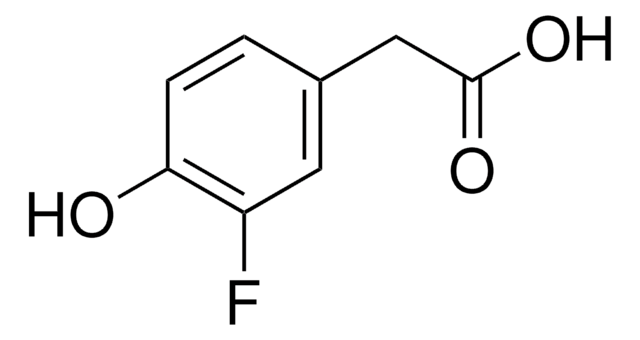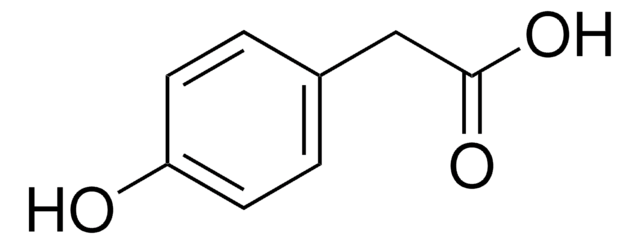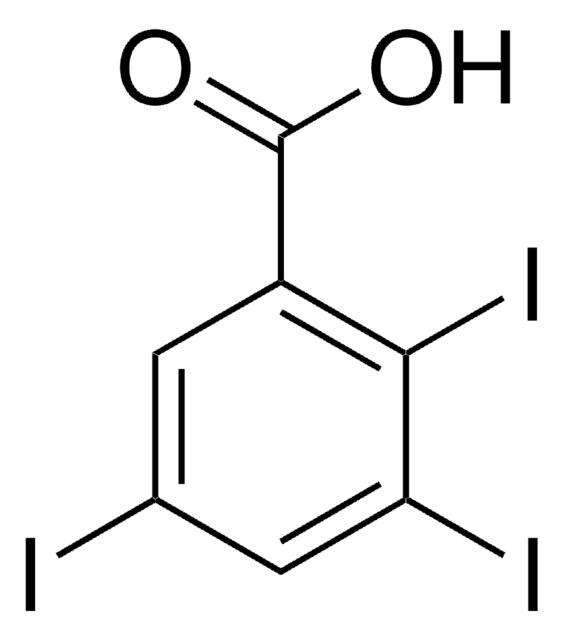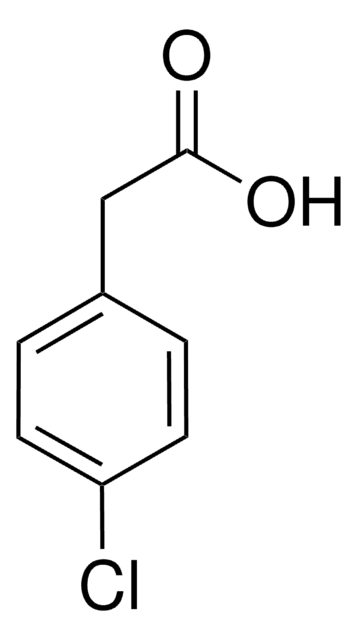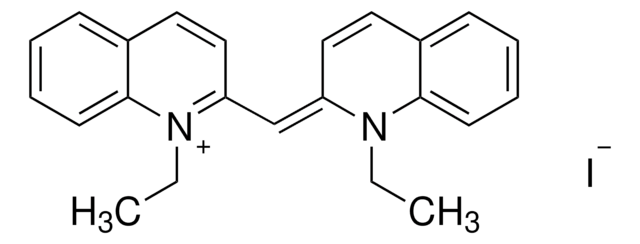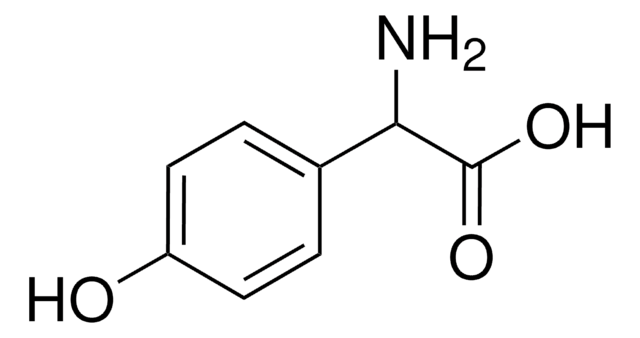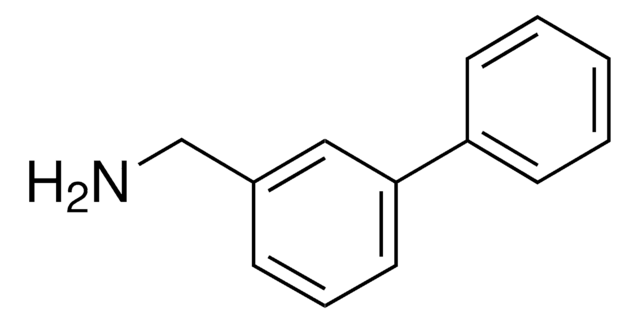All Photos(1)
About This Item
Linear Formula:
ClC6H3(OH)CH2CO2H
CAS Number:
Molecular Weight:
186.59
EC Number:
MDL number:
UNSPSC Code:
12352100
PubChem Substance ID:
NACRES:
NA.22
Recommended Products
Quality Level
Assay
99%
form
powder
mp
108-110 °C (lit.)
functional group
carboxylic acid
chloro
SMILES string
OC(=O)Cc1ccc(O)c(Cl)c1
InChI
1S/C8H7ClO3/c9-6-3-5(4-8(11)12)1-2-7(6)10/h1-3,10H,4H2,(H,11,12)
InChI key
IYTUKSIOQKTZEG-UHFFFAOYSA-N
General description
3-Chloro-4-hydroxyphenylacetic acid is an auxin influx inhibitor. It is one of the major chlorinated metabolite of chlorotyrosine.
Signal Word
Warning
Hazard Statements
Precautionary Statements
Hazard Classifications
Eye Irrit. 2 - Skin Irrit. 2 - STOT SE 3
Target Organs
Respiratory system
Storage Class Code
11 - Combustible Solids
WGK
WGK 2
Flash Point(F)
Not applicable
Flash Point(C)
Not applicable
Personal Protective Equipment
dust mask type N95 (US), Eyeshields, Gloves
Choose from one of the most recent versions:
Already Own This Product?
Find documentation for the products that you have recently purchased in the Document Library.
I Utkin et al.
Applied and environmental microbiology, 61(1), 346-351 (1995-01-01)
Resting cells of Desulfitobacterium dehalogenans JW/IU-DC1 growth with pyruvate and 3-chloro-4-hydroxyphenylacetate (3-Cl-4-OHPA) as the electron acceptor and inducer of dehalogenation reductively ortho-dehalogenate pentachlorophenol (PCP); tetrachlorophenols (TeCPs); the trichlorophenols 2,3,4-TCP, 2,3,6-TCP, and 2,4,6-TCP; the dichlorophenols 2,3-DCP, 2,4-DCP, and 2,6-DCP; 2,6-dichloro-4-R-phenols (2,6-DCl-4-RPs
Petr Hosek et al.
Journal of experimental botany, 63(10), 3815-3827 (2012-03-23)
The molecular basis of cellular auxin transport is still not fully understood. Although a number of carriers have been identified and proved to be involved in auxin transport, their regulation and possible activity of as yet unknown transporters remain unclear.
Ali R Mani et al.
The Journal of biological chemistry, 282(40), 29114-29121 (2007-08-10)
During inflammation, neutrophil- and monocyte-derived myeloperoxidase catalyzes the formation of hypochlorous acid, which can chlorinate tyrosine residues in proteins to form chlorotyrosine. However, little is known of the metabolism and disposition of chlorotyrosine in vivo. Following infusion of deuterium-labeled [D(4)]chlorotyrosine
B A van de Pas et al.
Applied and environmental microbiology, 67(9), 3958-3963 (2001-08-30)
The amount of energy that can be conserved via halorespiration by Desulfitobacterium dehalogenans JW/IU-DC1 was determined by comparison of the growth yields of cells grown with 3-chloro-4-hydroxyphenyl acetate (Cl-OHPA) and different electron donors. Cultures that were grown with lactate, pyruvate
H Nguyen et al.
Toxicology, 160(1-3), 207-217 (2001-03-14)
Exposure to airborne pollutants such as tobacco smoke is associated with increased activation of inflammatory-immune processes and is thought to contribute to the incidence of respiratory tract disease. We hypothezised that cigarette smoke (CS) could synergize with activated inflammatory/immune cells
Our team of scientists has experience in all areas of research including Life Science, Material Science, Chemical Synthesis, Chromatography, Analytical and many others.
Contact Technical Service